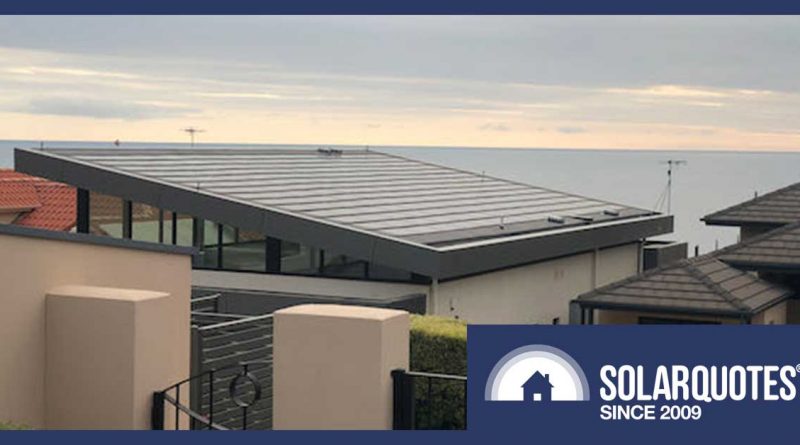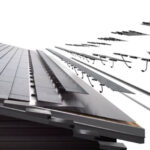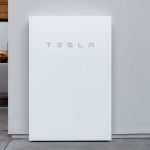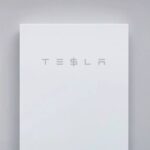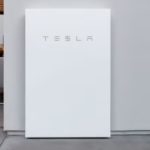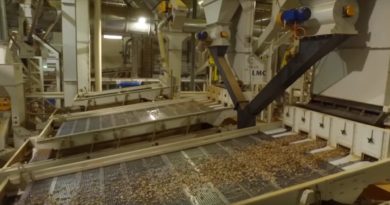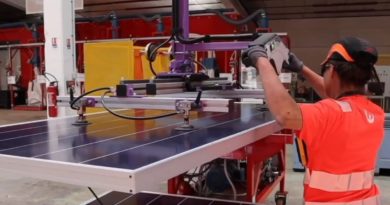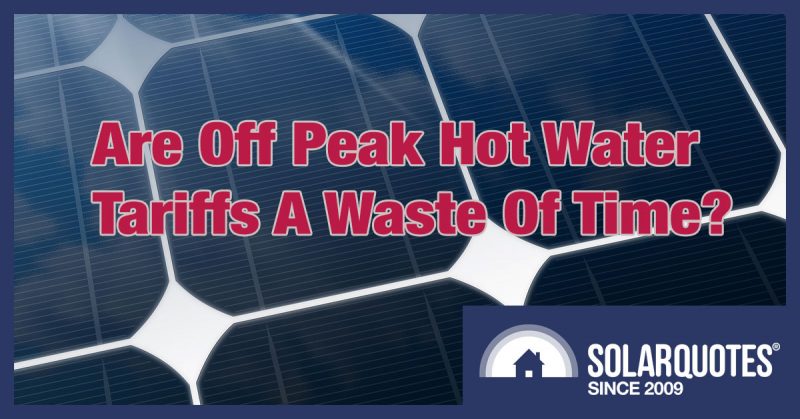Tesla Finally Launch Solar Tiles In Australia With Insane Bonus For Early Adopters
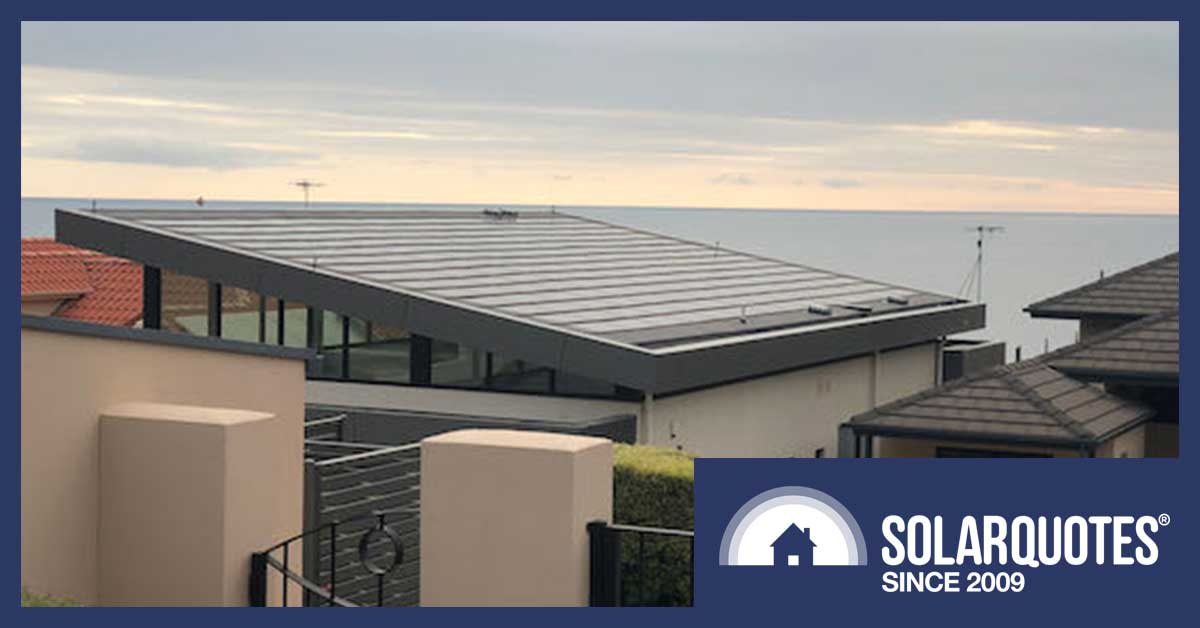
Tesla’s solar tiles are finally coming to Australia. You won’t believe what Elon Musk has promised the first thousand buyers…
When Elon Musk launched Tesla Solar Roof Tiles four and a half years ago, there was only one question his Australian fans were desperate to know:
- When can we get these Tesla solar roofs in Australia?
Up until now, the answer has been — we can’t! But I have good news for Tesla fans and not so good news for people who enjoy getting good value for their money. After years of delay, Tesla solar roofs will begin installation from the first of July. They are taking reservations now. The bad news is, they’re bloody expensive.
But there is a silver lining attached to the long delay. It has given Tesla time to improve its offering. This means Australians can enjoy higher efficiency ‘Phase 2’ solar tiles. And even better, by utilizing technology developed by Musk’s SpaceX, the first 1,000 solar roof systems they sell in Australia will receive free “Satellite Sunshine”.
Musk claims this insane technology – that sounds like something out of an Isaac Asimov novel – enables Tesla solar roofs to produce energy after sunset.
They’re Not Cheap
Before you go rushing off to reserve your Tesla solar roof, I should let you know it’s not likely to be cheap. This is the case even if you are building a new home, or replacing the roof of an old one, and the Tesla solar tiles save you the cost of roofing material. While no prices for Australia have been given, this Electrek article says a current, Phase 1, solar roof of 400 square metres with 12.3 kilowatts of solar capacity costs from $100,000 to 130,000 Australian dollars. That’s well over twice what you would pay here for a high-quality tile roof and a standard solar system that size.
We have the lowest rooftop solar installation costs globally, so I figure Tesla realized they needed to throw in a sweetener if they were going to shift any reasonable quantity of roofs and this is why only Australians are receiving a free ‘Satellite Sunshine’ deal.

The Tesla solar roof looks like a normal tile roof, but isn’t cheap.
Tesla Solar Tiles: Phase 2 (The Next Generation)
After revealing Tesla Solar Tiles to the world In November 2016, very little happened. For the first few years, the only places they showed up were on the roofs of Tesla employees. It only 18 months ago a small started to be sold in the in the United States. The reason they were so delayed is a tale of hubris and the Model 3 electric car.
At the start of 2017, when Elon Musk announced he would put the Tesla Model 3 electric car into production without the extensive testing all conventional new cars undergo, I thought he was an idiot. But, as time passed, I was proved wrong. It turned out he was actually a quadruple idiot, and problems with Model 3 production almost destroyed Tesla. To save his company from bankruptcy, Elon put all non-essential projects on the back-burner. These included the Powerwall 2 and solar roofs.
But, as far as Tesla solar roofs are concerned, this delay may have been a blessing in disguise. If we can believe Tesla’s claims, the extra time will give solar roofs an edge that is out of this world.
SpaceX & Starlink
SpaceX is (mostly) owned by Elon Musk but is a separate company from Tesla. This meant it was financially unaffected by Tesla’s Model 3 woes. While solar tiles languished on the back burner, rocket burners at SpaceX propelled their projects at supersonic speeds. Over the past 5 years, they have progressed by leaps and bounds and occasional explosions.
In addition to building reusable rockets and preparing to send people to Mars, SpaceX is heavily involved in launching Starlink communications satellites. These are designed to provide worldwide, high speed internet from any location. By the end of this year, SpaceX intends to have launched 1,584 of them. Enough to provide near worldwide internet coverage. They have plans to launch over 30,000 more.
Every Starlink satellite launched this year incorporates technology designed to…
- Reduce the harm they cause to ground-based astronomy, and…
- Boost the output of Tesla solar tile roofs.
Starlink & Astronomy
Musk’s Starlink satellites have been accused of ruining traditional, ground-based satellite astronomy. The fast-moving satellites appear as streaks in telescopic observations. Because there are plans to launch tens of thousands more, some experts fear ground-based astronomy will become impossible.
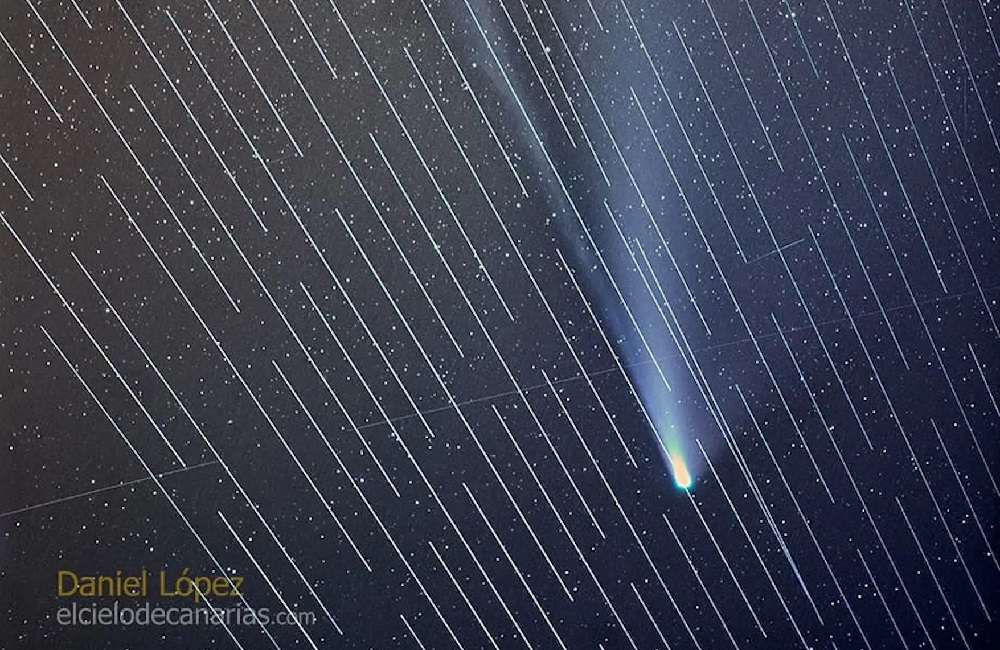
The long streaks are Starlink satellites photobombing the image of a comet. (Image: Daniel Lopez via Australian Business Insider.)
Starlink’s Adelaide Link
Adelaide amateur astronomer, Neil Shaughnessy, is a vocal critic of Elon Musk’s Starlink satellite program. While not a professional, he is the closest thing to a leader the anti-Starlink satellite movement has.
He says many of his observations have been ruined by Starlink satellites, and because multiple satellites travel along the same orbital path, they….
“Appear one after the other in images like a string of beads.”
He has even stooped so low as to deploy an excruciating pun against Musk by tweeting…
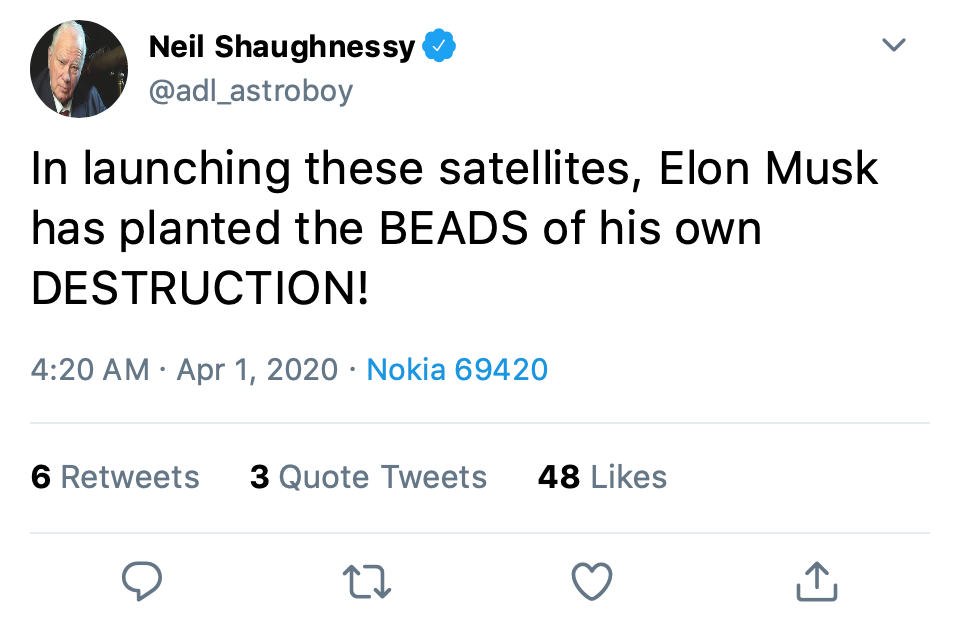
Elon Musk has responded in his own way by publicly describing him as…
- “A nutter.”
- “Mentally unbalanced” and…
- “A beadophile”.
But Elon hasn’t just been slinging insults. He has also been working on a solution.
Satellite Synergy
Over a year ago, Elon Musk stated:
“Light pollution from Starlink satellites is not a problem of too much light, it’s a problem of light going where it’s not wanted. If we can control where it goes, not only does the problem go away, it creates a massive opportunity.”
When it comes to controlling where the light goes, SpaceX appears to have cracked the problem.
SpaceX is a lot quieter and more subdued with public announcements than Tesla. This could result from being involved with Defense contracts, or it could be due to Elon feeling the need to occasionally take off the clown shoes and get down to what he considers the serious business of getting humanity off earth and into space.
Whatever the reason — despite much crowing over successful launches and landings — we have much less idea what is going on than at Tesla. So it came as a real surprise yesterday when it was announced how they would solve the problem.
Each Starlink satellite is a rectangle 3.2 m long by 1.6 m wide and only 20 cm thick. In an attempt to reduce light pollution, SpaceX previously fitted them with a visor to absorb sunlight.
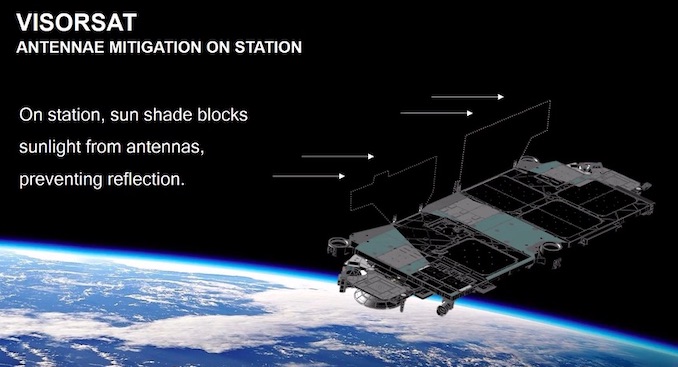
The light-absorbing visor (Image: Astronomy Today)
This visor has now been replaced with an ultra-thin mirror the same length and width as the satellite. This will not only prevent sunlight striking the satellite interfering with astronomy; the sunlight will be reflected exactly where Elon Musk wants it to go — onto Tesla solar roofs.
Quantum Mirror Technology
Starlink satellites orbit at a typical altitude of 550 km. Shining a normal 3.2 m by 1.6 m mirror onto a roof from that height would have no noticeable effect. This is because the sun is not a point source of light, so sunlight striking a normal mirror immediately starts to spread out and diffuse. But SpaceX is using no ordinary mirrors. Starlink satellites have quantum mirrors.
In a normal mirror, like the one in your bathroom — or if you’re Elon Musk, on your bedroom ceiling — the atoms that reflect light are decoherent. This means the angle at which light strikes the mirror determines the angle of reflection. But in the zero-gravity and vacuum of space, they can put the Starlink mirrors in a state of quantum superposition. This means that, of all the possible ways photons of light could hit them, the mirror is only able to perceive them as striking from the desired angle. This forces the waveform of light to collapse in a way that only allows it to reflect in one possible direction. The mirrors are 99.9% effective, with the small loss mostly due to trace amounts of atmosphere still present in low earth orbit.
Starlink Has Perfect Positioning
In high earth orbit or deep space, satellites and probes rely on reaction jets and gyroscopes to control their position. The drawback is fuel needs to occasionally be consumed to brake and reset the gyroscopes. If this isn’t done, they’ll eventually reach their maximum speed and can no longer be used.
But because they are in low earth orbit, Starlink satellites can use electromagnets to interact with the earth’s magnetic field to alter their position. Because the energy supplied to these magnets can be precisely controlled, it allows light reflected from the quantum mirror to be directed with extreme precision.
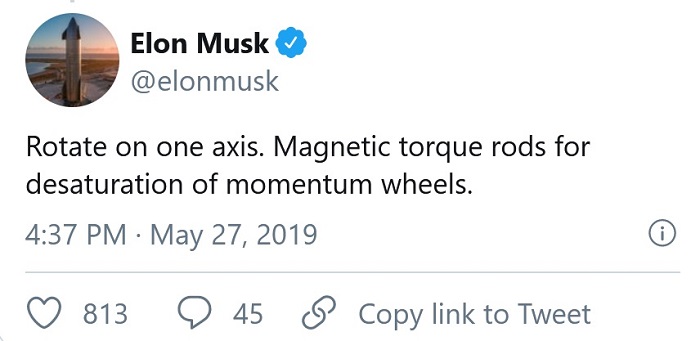
The satellites also have gyroscopes for rapid position changes, but these are braked using the electromagnets. The satellites also have thrusters used to occasionally boost their orbit to overcome the effects of atmospheric drag. But rather than using rocket fuel or compressed gas, these are ion drives that are far more fuel-efficient.

This image shows exactly how ION drives don’t work.
Satellite Sunshine Provides Solar Power At Night
Using perfectly positioned quantum mirrors, a Starlink satellite can send a ray of sunshine 3.2 m by 1.6 m anywhere it wants. By the time it reaches the ground, this ray will be as strong as normal sunlight and contain a little over 5 kilowatts of solar energy. With Tesla solar roof tile efficiencies approaching 20% it will supply around 1 kilowatt of power. This may not seem like much, but it is close to an Australian home’s average evening power draw.
At the moment, Tesla only promises to provide enough sunshine for Tesla solar roofs to generate an average of 4 kilowatt-hours overnight. They also only commit to providing satellite sunshine within four hours after sunset and four hours before sunrise.
Starlink satellites won’t supply sunshine in the middle of the night because they orbit at a typical height of 550 km. This means they can only direct sunlight to a point on earth a maximum of 2,700 km away. Since they orbit at 27,000 kilometres per hour relative to the earth’s surface, a single satellite could only supply light to a roof for a maximum of around 12 minutes. SpaceX gets around this limitation by reflecting light from satellite to satellite.
The more satellites involved in a chain of reflected light, the more complex it gets. Hence no commitment to providing satellite sunshine in the middle of the night. I also suspect this may be a way to prevent people complaining about sunlight shining on their neighbour’s roof and keeping them awake late at night. According to Elon Musk, tests have already been carried out that have reflected sunlight around the entire world.
It’s Only The Beginning
Musk says satellite sunshine will initially only be available to Tesla solar roof homes. But once the system has more satellites and greater flexibility, it will be able to provide emergency lighting to any point on earth. It will also be possible for people to top up solar generation during the day when solar energy output is low. Also, homes with large solar roofs will be able to benefit from more than one satellite’s worth of sunshine at a time.
But as far as Elon Musk is concerned, these improvements are only minor details. He has a laser-like focus on getting people into space. He says orbital quantum mirrors can provide solar power to spaceships travelling away from the sun, whether they are heading to mars or going further afield.
He also says quantum mirrors with an area of 100,000 square km — roughly the size of Tasmania — could be placed within the orbit of Mercury to supply Mars with enough sunshine to melt its polar ice caps and provide the energy required to terraform the red planet and give it a breathable atmosphere.
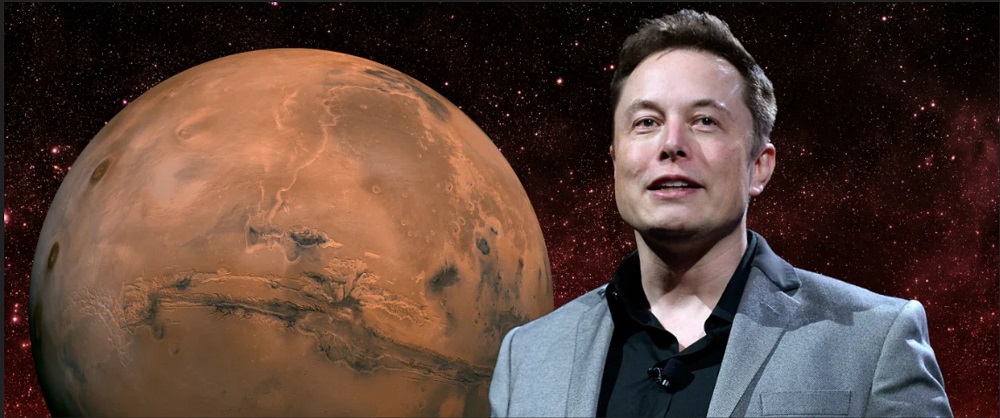
Image: Business Insider
Orbital Energy Storage
The Satellite Sunshine system can even provide energy storage. By bouncing sunlight around the planet, Starlink can add additional sunlight until its intensity reaches a point determined by the mirror’s small amount of inefficiency. For Starlink, Elon Musk says this would be around 1,000 times the intensity of normal sunlight before the mirrors’ waste heat would cause them to become too hot. But at a higher altitude where the quantum mirrors can operate more efficiently due to the more perfect vacuum, this stored energy could build up to 100,000 to 1,000,000 times as intense as normal sunshine. This could be tapped as required and used to illuminate entire solar farms.
Not Lucky — Just Lonely
Only Australians are being offered free Satellite Sunshine when they buy a Tesla solar roof. In the US, it will have to be leased for an, as yet, unrevealed amount. You may think we’re lucky, or this is merely our just reward for being so goddamned physically attractive, but the real reason is not that we’re special; it’s because we’re lonely.
Providing communication services to people in Europe, North East Asia, and North America requires many satellites in high inclination orbits. But because of the way orbits work, they have to spend half their time over the mostly empty Southern Hemisphere. So rather than have their satellite sunshine go to waste, Elon probably decided it was better to throw it in for free to encourage the uptake of Tesla’s costly solar tile roofs in Australia. (This suggests New Zealand may also eventually be offered a special deal as well.)
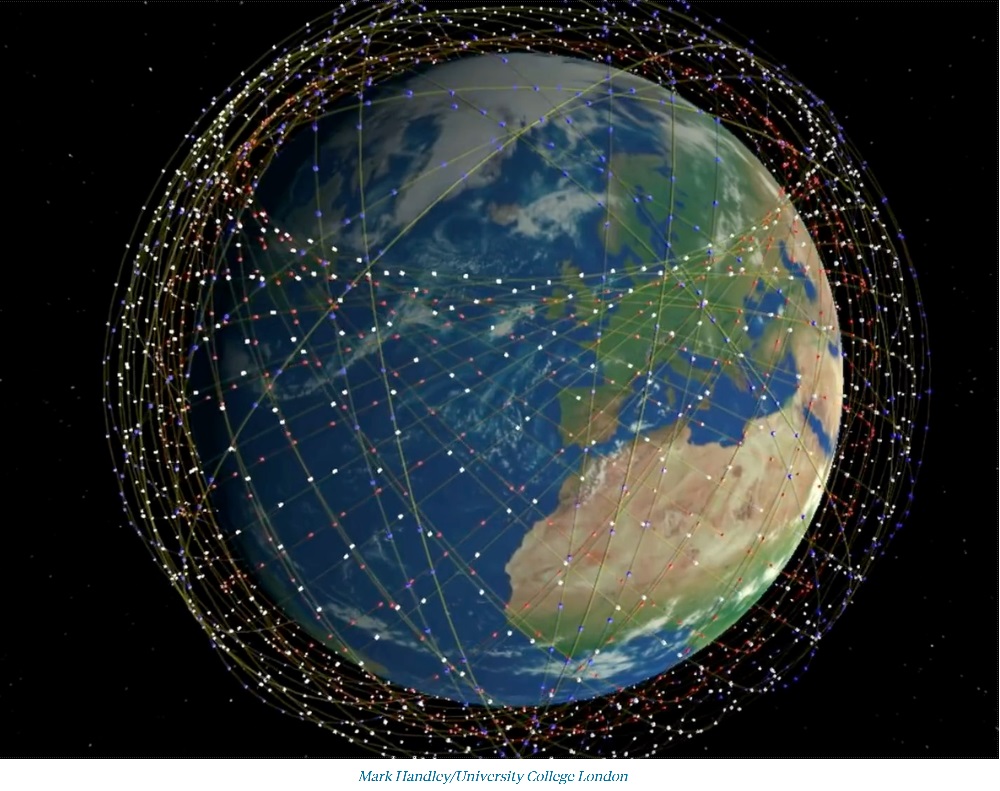
What Starlink orbits will look like with 4,400 satellites, one-seventh the final number.
It’s Not A Good Deal
At an average of only 4 kilowatt-hours a night, this deal may only save around a dollar a day on electricity bills. Looking at the small print, I see the system’s life is actually a maximum of 30 years. So if it saves you a dollar a day over that time, it comes to $10,952. While that may seem like a lot, it isn’t that much compared to the roughly $100,000 to $130,000 cost of a system.
Amateur Astronomer Still Upset
I expected astronomers to be delighted by the news that light reflected from Starlink satellites will now be going onto Tesla solar roofs instead of ruining their observations. But Neil Shaughnessy is definitely not happy and has tweeted that Musk’s plan is…
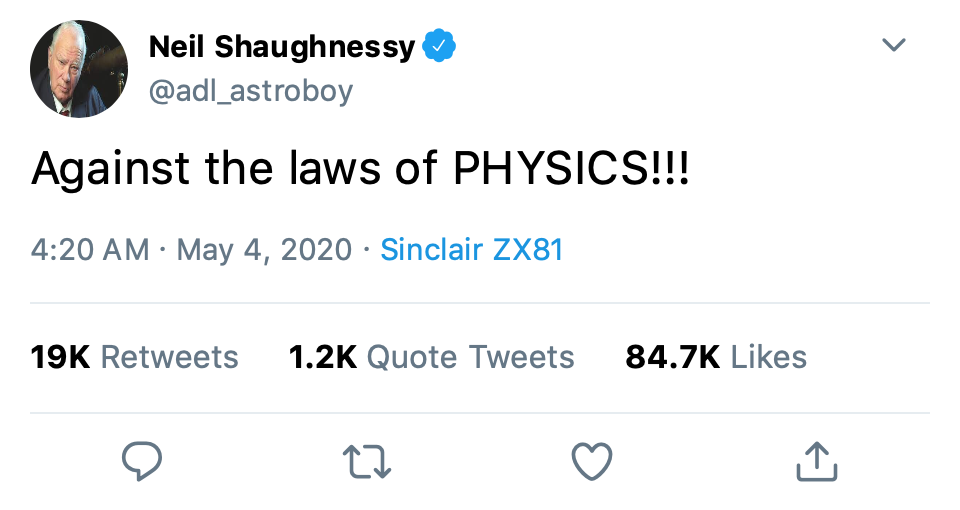
And…
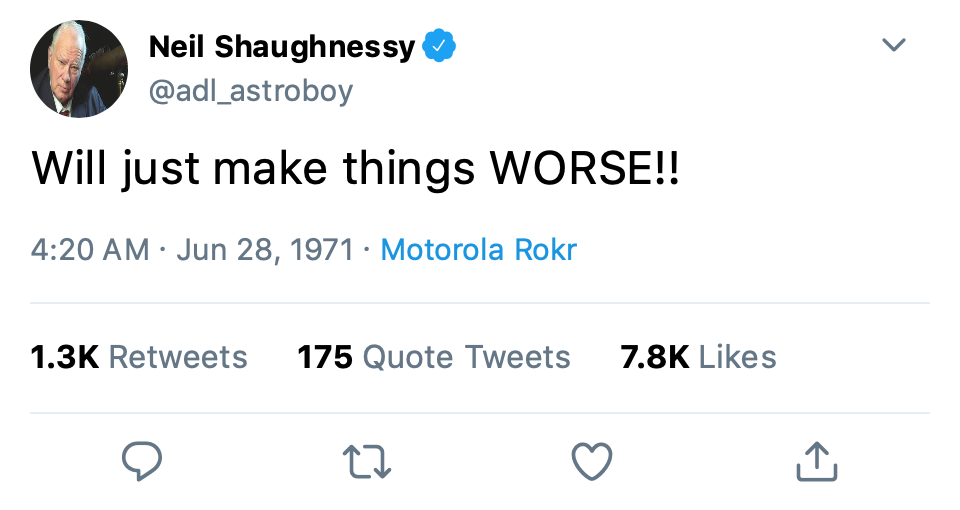
Anyone who abuses capitalization and exclamation points in that way is clearly distraught. As he lives in Adelaide, I contacted him to ask if he wanted to give me his opinion in person. We arranged an interview but, when I showed up at his home, knocking on the door produced no reply.
As I was about to leave I smelled smoke and, just to make sure everything was safe, I peered into his backyard to see where it was coming from. It was then I realized Elon was right and he is a nutter. Who else but a madman would leave a pair of smouldering shoes inside a rectangular patch of incinerated lawn?
Original Source: https://www.solarquotes.com.au/blog/tesla-solar-roof-apr1/

